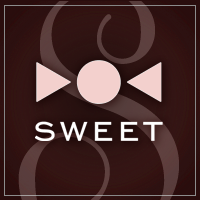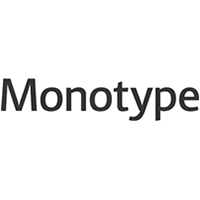
This weekend I stumbled upon a great video from the Type]Media Master Course in Type Design at KABK. The description reads:
About the fun in designing and casting traditional Dutch Sinterklaas™ chocolate letters by the Type]Media class of type design of 2010/11 at the Royal Academy of Arts (KABK) in The Hague. Supervised by Erik van Blokland (LettError). Video filmed and edited by Yanone.
Type]Media2011 Chocolate Letters from Yanone on Vimeo.
On the Vimeo page Yanone explains what material the letters are sculpted in.
Synthetic modelling clay or real pottery clay. It's a fantastic material in the way that you can revert mistakes. If you take away too much, you can always add it back. It's "Undo" in real life :)
This is the third time Type]Media organises this activity for its students, the two previous ones being in 2007 and 2008.
Vacuforming Molds for Chocolate Letters from Erik van Blokland on Vimeo.
This second video from 2008 focussed on the process of vacuforming letters. Back then the letters were designed and sculpted in foam. A nice contrast between high tech materials and very analogue results. The molds still needed to be cleaned before any casting could happen. The material is Vivak plastic from Bayer, said to be safe for food.
Clay model for chocolate letter. © Marina Chaccur
For those not familiar with the Dutch tradition of chocolate letters I am reprising my two year old article on the subject from Unzipped.
On the eve of Sinterklaas (the night of December 5th) countless children – and also quite a few adults – in The Netherlands receive the initial of their first name in the form of a chocolate letter as a gift. These letters were the subject of a deliciously tongue-in-cheek presentation by Gerard Unger at The Monotype Conference 1992 – Typographic Connections. I was wondering where this typically Dutch tradition originated and stumbled upon the wonderful resources chocoladeletter.net, home to the history of the chocolate letter, and Saint Nicholas Center, where one can discover the truth about Saint Nicholas. Sinterklaas is also celebrated in Belgium, but there is no tradition of giving chocolate letters. Conversely chocolate letters are produced in Germany and Austria as well, but over there they are exchanged around New Year's Eve – Silvesterabend.

During the 16th and 17th centuries pastry letters were captured in Dutch Masters' still-life paintings.
Long before the emergence of chocolate letters, pastry letters existed in The Netherlands. A poem from 1857 by J.J. Goeverneur mentions that "Kleine Jan" received '"his name J.A.N. entirely in pastry". He also has a "chocolate cigar" but no chocolate letter. Pastry letters were depicted on food still lives in the sixteenth and seventeenth century. And due to the shortage in chocolate during the Second World War Verkade resorted to making gingerbread letters.
According to Frits Booy in "Sint Nicolaas van A tot Z" the tradition of edible letters harkens back to a practice in medieval monastery schools. Pupils were taught how to write with pastry letters, which they were allowed to eat as a reward. Another explanation brought forward by Booy is the custom in the 19th century of covering Saint Nicholas presents with a sheet, with on top of that the child's initial made in bread dough.
The industrial manufacturing of chocolate letters began by the end of the 19th century. By then the concept of chocolate letters had become so familiar in Dutch culture that it was used as a metaphor for a typographic concept. Indeed the "Woordenschat" (Vocabulary) published in 1899, a volume with definitions for words and expressions compiled by Taco H. de Beer and Dr. E. Laurillard – lists the term "chocolate letters" as "groote, lange, zwarte letters, waarmeede de naam van een artist of leverancier op aanplakbiljet, affiche enz. staat uitgedruct" (large, long, black letters, with which the name of an artist or supplier is expressed on a bill, poster etc.).

Chocoladeletters © Alex De Jong
The archetypical chocolate letter is an Egyptienne, a slab serif with bracketed serifs. This type of letter characterised by big and heavy serifs, and no thin stems, so it is a lot less fragile. According to Gerard Unger the Egyptienne was very popular during the Industrial Revolution, which makes it a logical choice for that time period. Maybe a more instinctive aspect plays a role as well: people just ache to bite off those big chunky serifs. Up to the thirties another favoured shape was the bamboo letter. These beautifully adorned sans serifs are still sold by pastry cooks and "chocolatiers".
The sometimes awkward shapes of the letters are governed by the simple fact that within certain categories all the letters have to have the same weight. Because of this the stroke on the T or J is much heavier than those on the M or W. The design of the I would turn out to be disproportionate, which is why many manufactureres choose not to include that letter in their assortment. Baronie / De Heer solves this problem by having two I's in one package.

Metal molds for casting chocolate letters.
Originally the letters were cast in metal molds. One of the main suppliers of iron casting molds was the Vormenfabriek in Tilburg. Nowadays those molds are manufactured in plastics. The K, the L and the T are the letters that frequently break in the mold, because the strokes are connected in just one relatively small spot. Letters that break during manufacture are recycled. Most letters are ribbed; this is not mere decoration but because it makes them come off the mold more easily. Also the ribs disguise occasional cooling flaws and minor imperfections in the chocolate surface. You can view a short clip demonstrating the casting of chocolate letters on SchoolTV.nl.
Although they kept the shape of the Egyptienne, two years ago Droste made their chocolate letters a little rounder: "even tastier on the palate". Verkade experimented with digital LCD shapes a couple of years ago, but abandoned this modern variant since then. Theo Kalf of the Zaans Museum & Verkade Paviljoen knows why: "Because of its segmented shape the digital letter broke at specific spots. People prefer the traditional letter: somehow you always manage to break off a bigger piece than you intended."

Promotional image for the Dutch movie TBS. The slogan "Wie zoet is krijgt lekkers, wie stout is TBS" is a clever take on a popular Sint Nicholas rhyme. Roughly translated it means "If you're good you'll get sweets, if you're bad you'll get TBS (terbeschikkingstelling: detention during Her Majesty's pleasure)".
The M is the most sold chocolate letter, because it is the M from Moeder (Mother) and Mama. Possibly greed is also at play. Although all the letters have the same weight the M appears to be bigger. In the 50s the J was the top seller. According to an article published by G.W. Ovink in 1959 in the periodical Delta the popularity of the names Jan, Johannes, Jaap and all their variants would account for this increased demand. After the J the M rose in popularity. Ovink attributes this to the birth of both princesses Margriet and Marijke. Besides the M the S from Sint (Saint Nicholas) and the P from Piet and Papa are also in demand. Commercial manager at Droste Henk Bijma: "Every year we keep track of how the different letters do. For example two years ago we had too many Gs, so last year we adapted the production accordingly." For diabetics only the letter S is available, which stands for Suikerziekte (Diabetes). For people who want to be a little bit different numbers and punctuation marks (exclamation and question mark) are available, but only in wholesale.
Most manufacturers don't make the complete alphabet. Droste for example skips not only the I but also the U, X, Y and Z. Delicata (private brand of Albert Heijn) and Verkade do offer all the letters, but you better not procrastinate if you need a less common one. Baronie/De Heer only delivers complete alphabets to resellers.

Bakery Liever in the Rijnstraat in Amsterdam offers Hebrew chocolate letters
(17 december 1965).
Bonbon Jeannette in Amsterdam used to make Hebrew letters on demand, but they stopped their activities years ago. The molds were donated to the Jewish History Museum. And at the occasion of the El Hema project and exhibition chocolate Arabic characters were sold.

Chocolate Arabic character for El Hema.
In the Netherlands an estimated 12 to 14 million chocolate letters is produced on a yearly basis by the chocolate manufacturers. Sixty to seventy percent is milk chocolate. Letters are also exported to other countries where Dutch have settled, such as The U.S. and Canada where they import over two million letters.
This post mainly uses translated and restructured portions of an article by Hans Hoekstra on chocoladeletters.net. Source: Het Parool, November 14, 1998.










